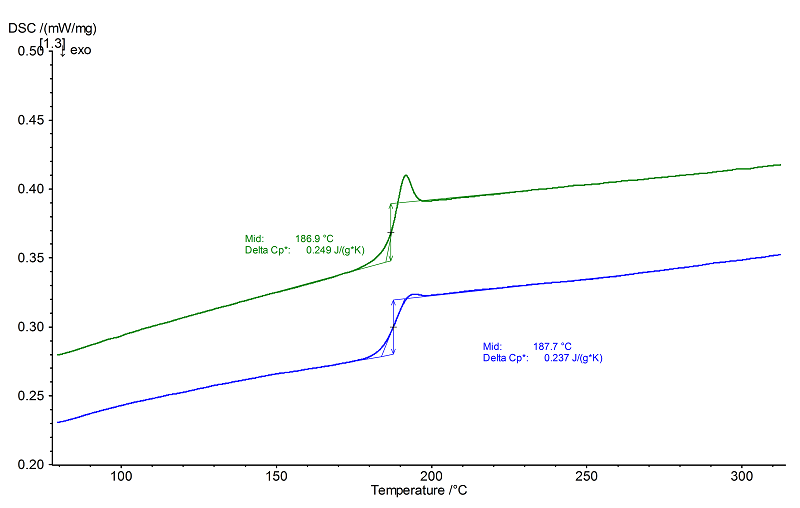PSU: Polysulfone
- Short Name
- PSU
- Name
- Polysulfone
- Group
- HTRTP - High-Temperature Resistant Thermoplastics
- General Properties
- Chemical Formula
- Structural Formula
-

Properties
- Glass Transition Temperature
- 185 to 190 °C
- Melting Temperature
- - °C
- Melting Enthalpy
- - J/g
- Decomposition Temperature
- 530 to 540 °C
- Young's Modulus
- 2500 to 2700 MPa
- Coefficient of Linear Thermal Expansion
- 50 to 60 *10¯6/K
- Specific Heat Capacity
- 1.37 J/(g*K)
- Thermal Conductivity
- 0.15 W/(m*K)
- Density
- 1.24 to 1.25 g/cm³
- Morphology
- Amorphous polymer
- General properties
- High stability and stiffness. Good toughness. Good chemical resistance. Low water absorption. Very good electrical insulation properties
- Processing
- Injection molding, extrusion for the production of thin films
- Applications
- Electrical engineering (e.g., condensators). Medical engineering. Food technology. Aerospace (helmets). Chemical and laboratory equipment
Internet Links
NETZSCH Measurements
- Instrument
- DSC 204 F1 Phoenix®
- Sample Mass
- 12.52 mg
- Isothermal Phase
- 3 min/3 min/5 min
- Heating/Colling Rates
- 10 K/min
- Crucible
- Al, pierced
- Atmosphere
- N2 (40 ml/min)

Evaluation
Since PSU is entirely amorphous, the DSC curves above show only one glass transition with a glass transition midpoint temperature at 187°C in the 2nd heating (green) and 188°C in the 1st heating (blue). The glass transition in the 2nd heating is overlapped by a larger relaxation peak than in the 1st heating. This indicates an increase in short-range order during the controlled cooling at 10 K/min than was originally present in the material.
The heights of the glass transition steps of 0.24 J/(g.K) (1st heating) and 0.25 J/(g.K) (2nd heating) are nearly identical.
The heights of the glass transition steps of 0.24 J/(g.K) (1st heating) and 0.25 J/(g.K) (2nd heating) are nearly identical.